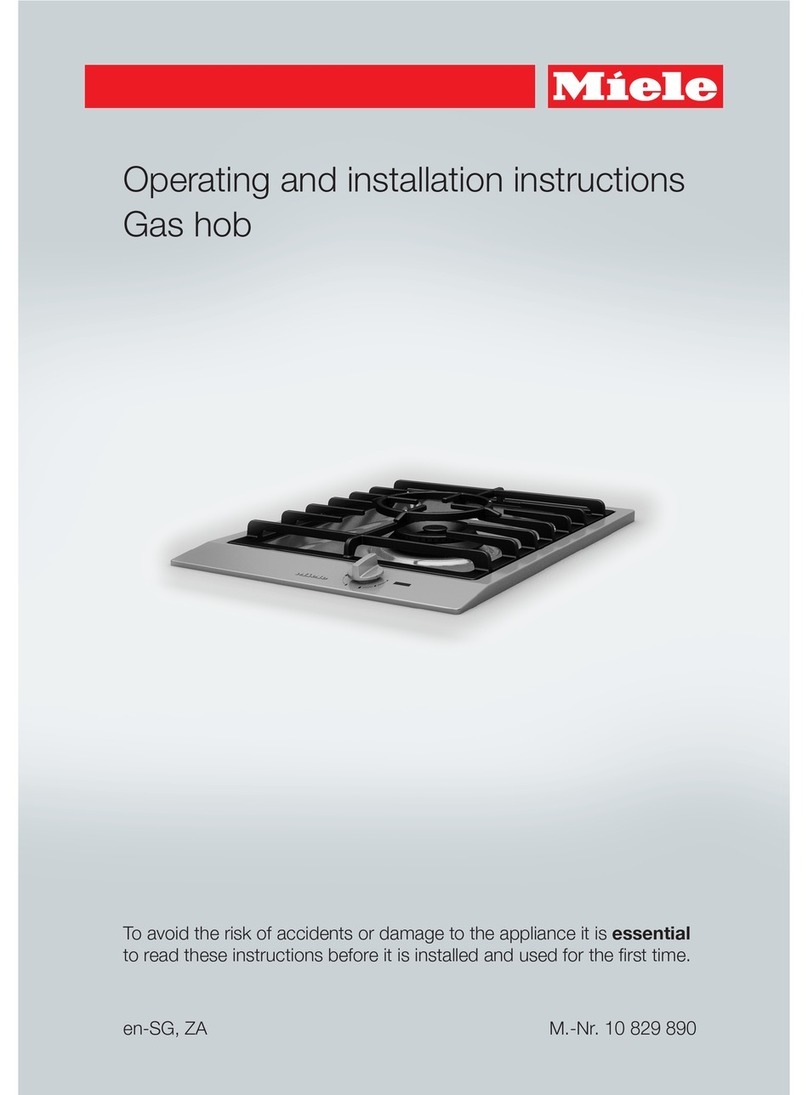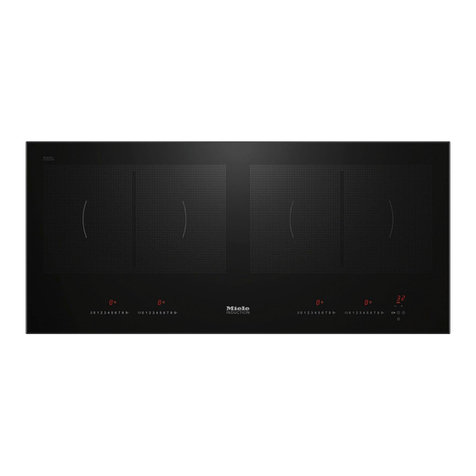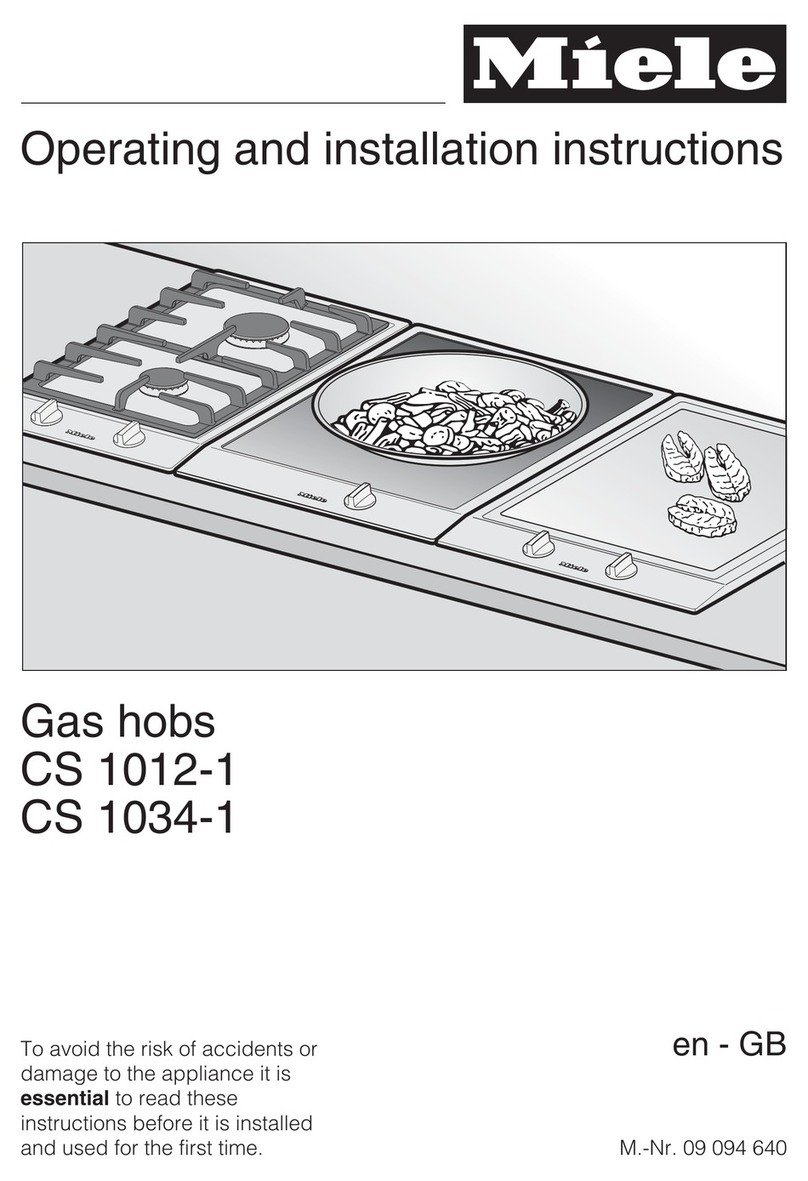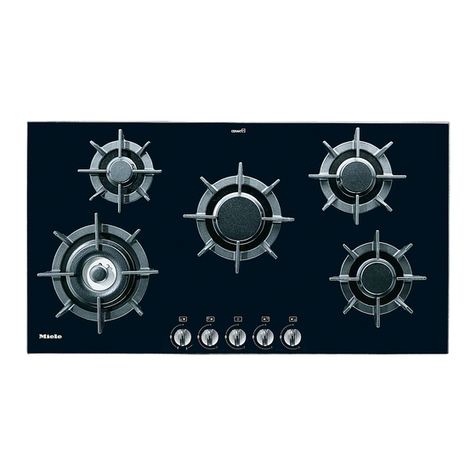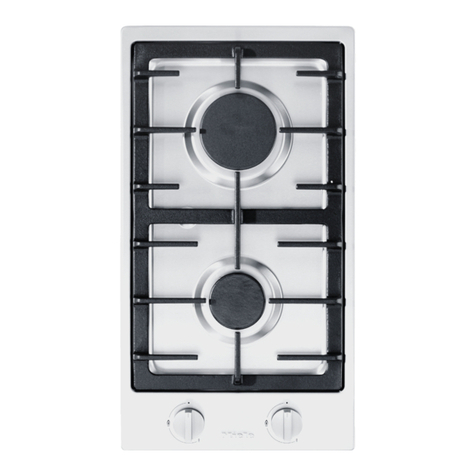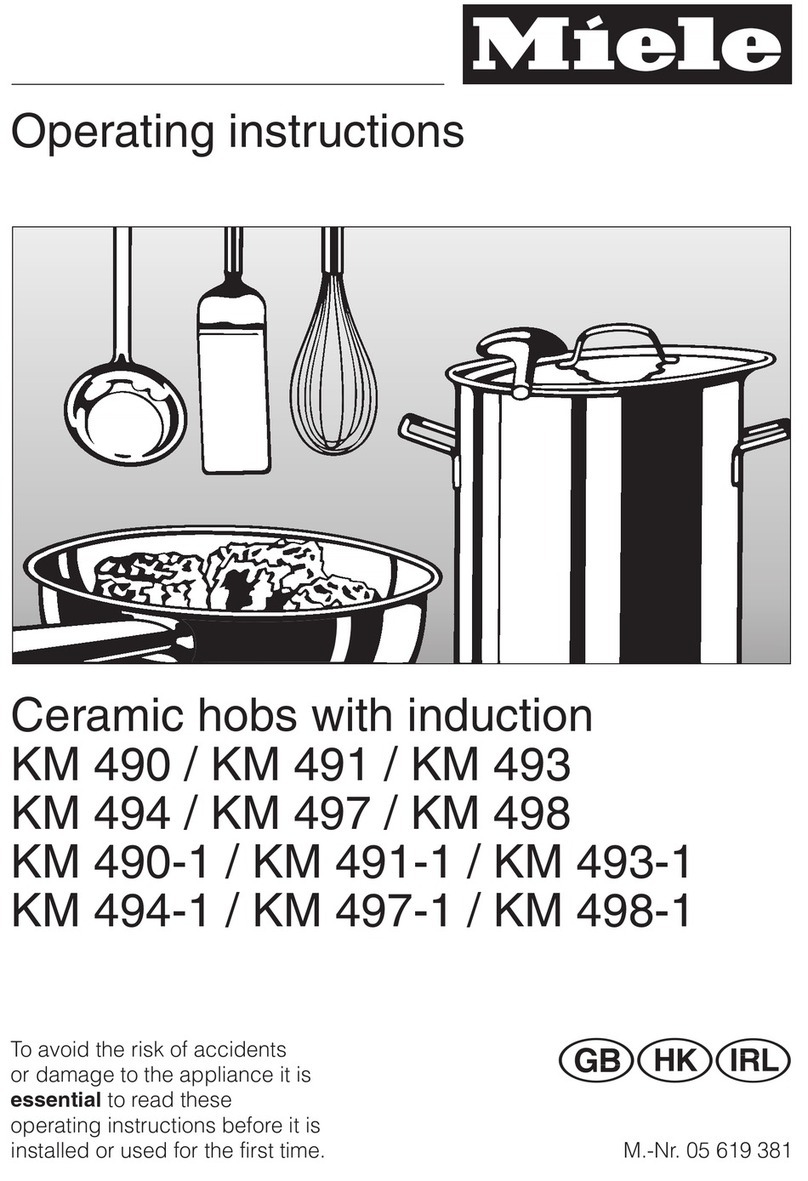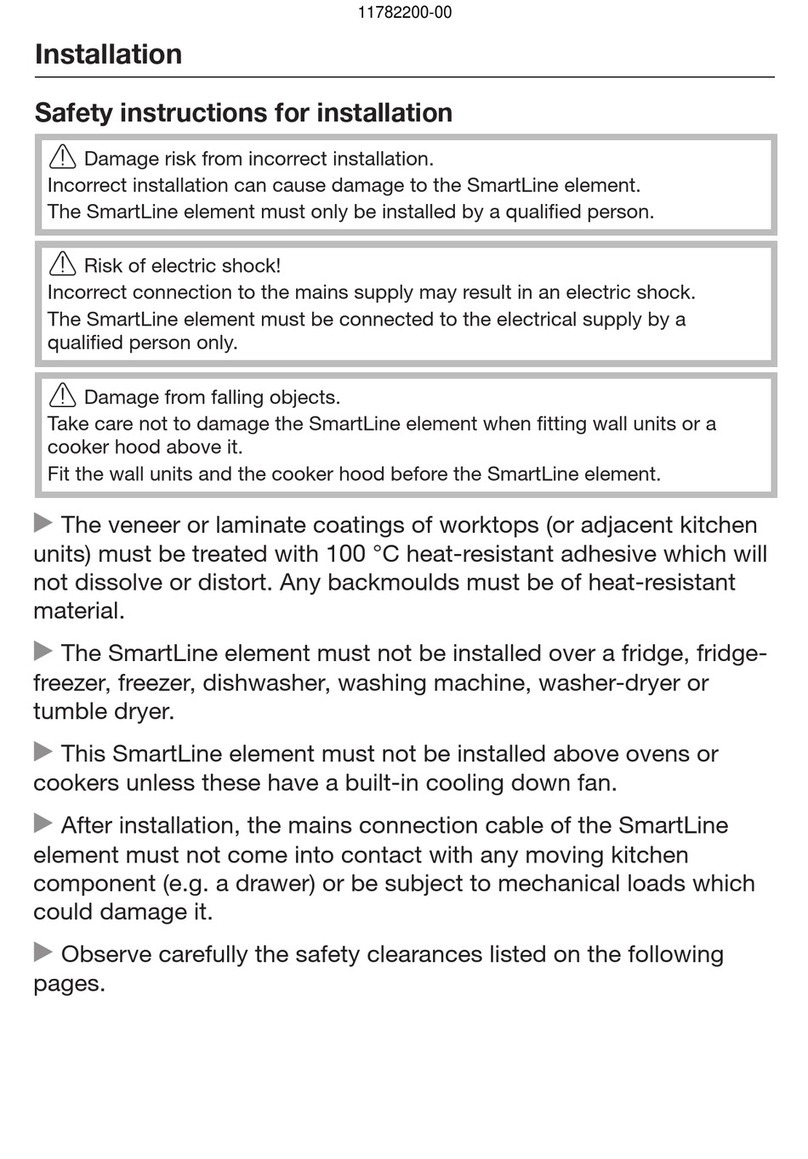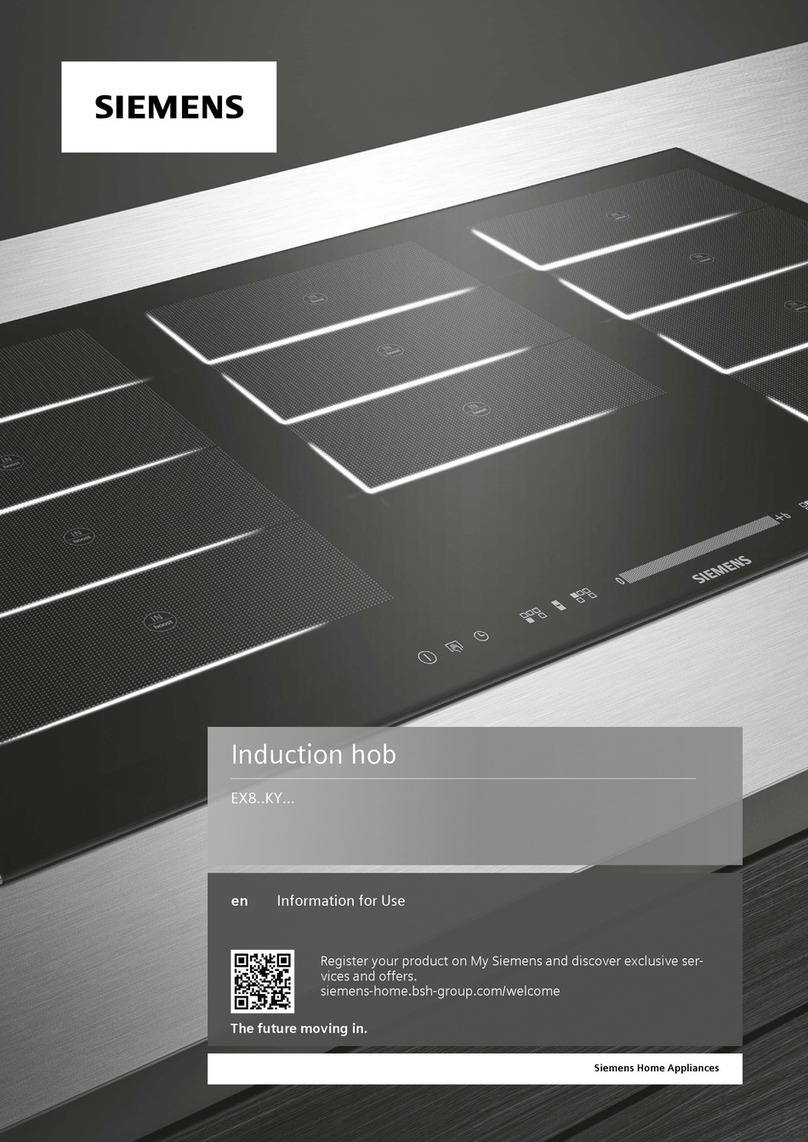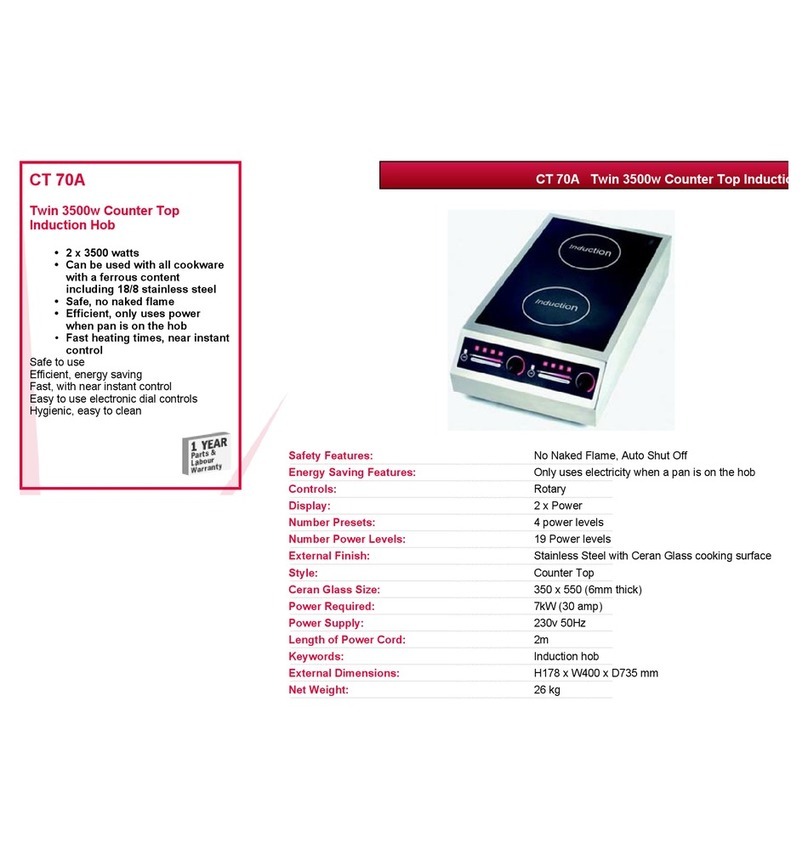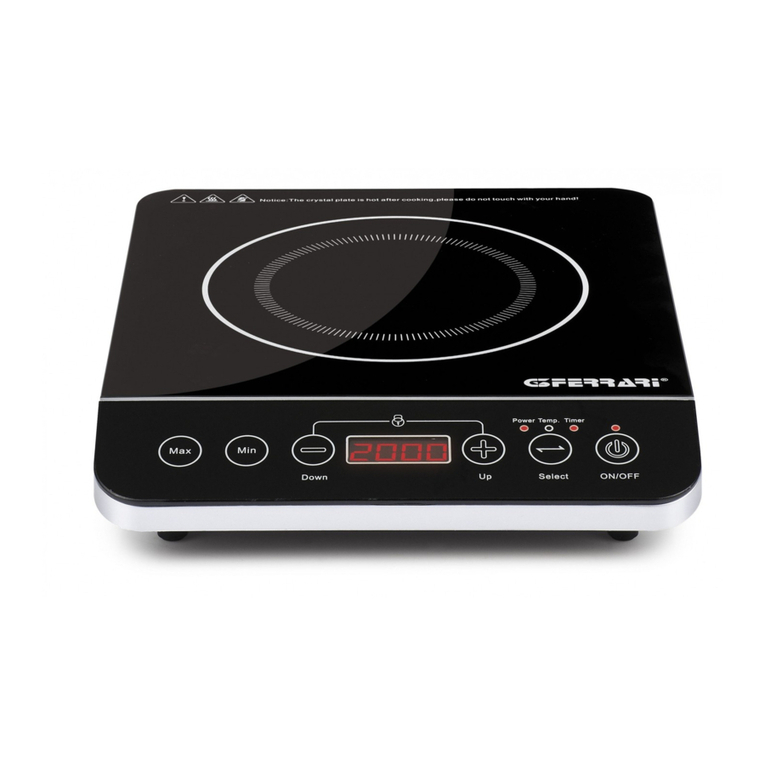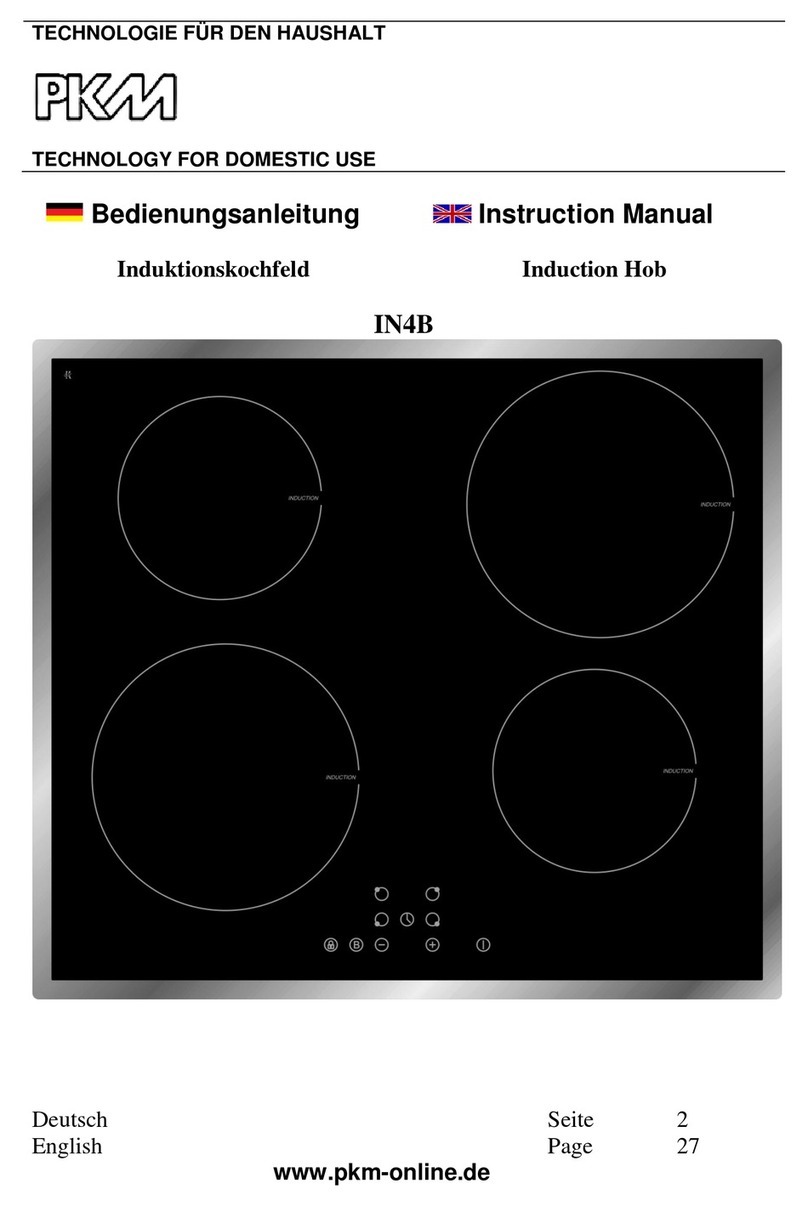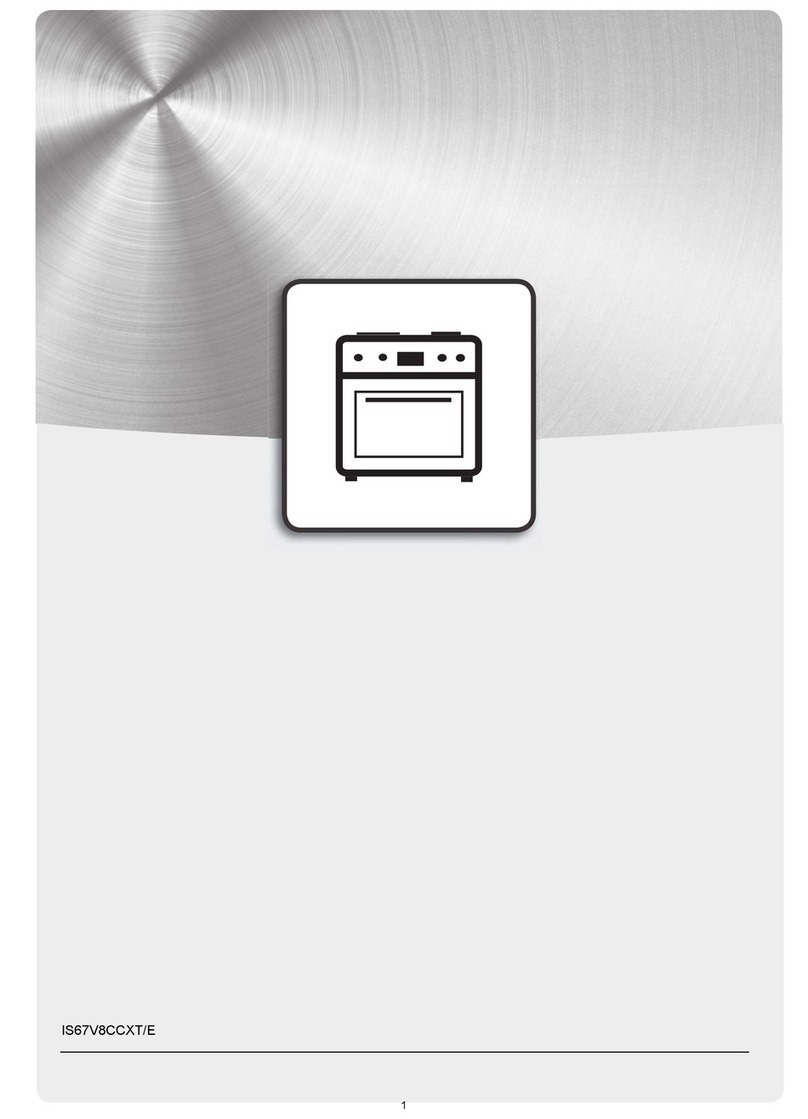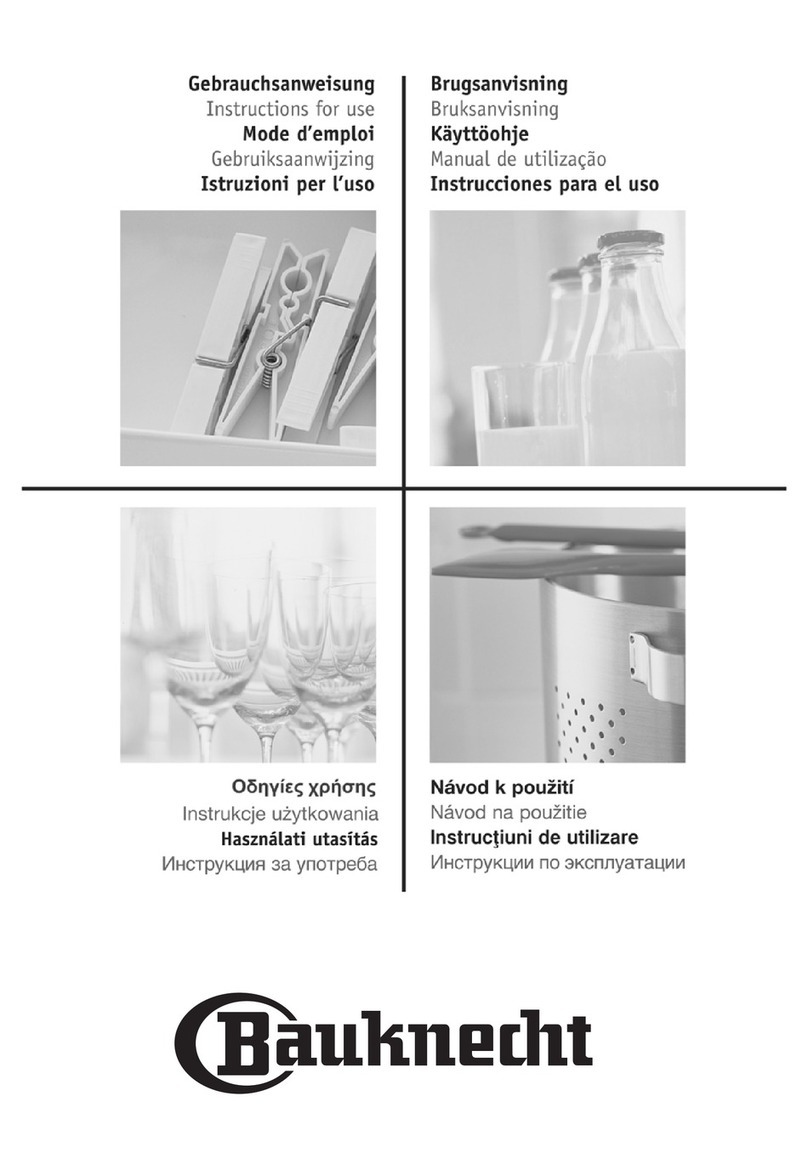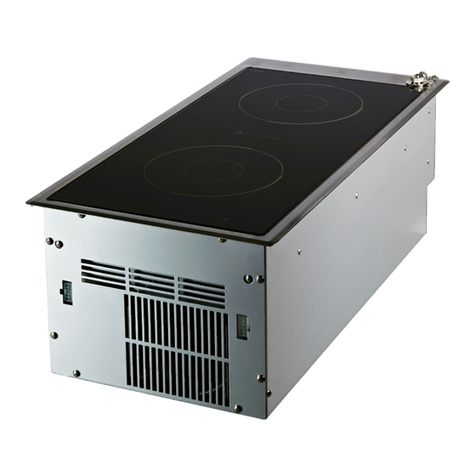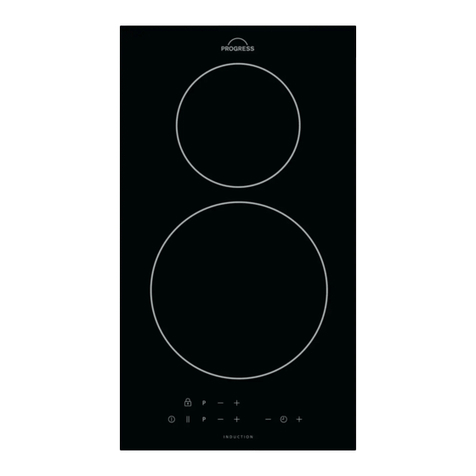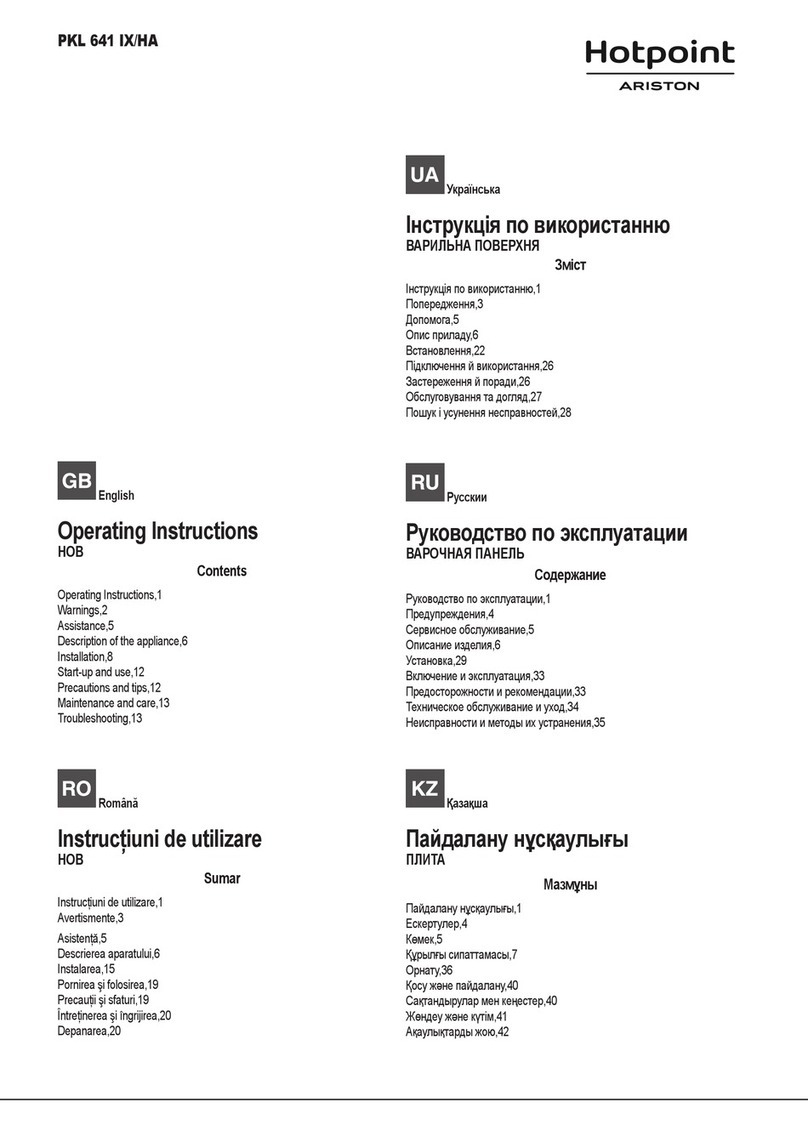
~The appliance gets hot when in use and remains hot for a while
after being switched off. There is a danger of burning until the
residual heat indicators go out.
~You could burn yourself on the hot hob. Protect your hands with
heat-resistant pot holders or gloves when handling hot pots and
pans. Do not let them get wet or damp, as this causes heat to
transfer through the material more quickly with the risk of scalding or
burning yourself.
~When the appliance is switched on either deliberately or by
mistake, or when there is residual heat present, there is the risk of
any metal items left on the hob heating up, with the danger of
burning.
Depending on the material, other items left on the hob could also
melt or catch fire.
Damp pan lids might adhere to the ceramic surface and be difficult
to dislodge.
Do not use the appliance as a resting place.
Switch the cooking zones off after use.
~Do not allow solid or liquid sugar, or pieces of plastic or
aluminium foil to get onto the cooking zones when they are hot, as
they can damage the ceramic surface when it cools down. If this
should occur, switch off the appliance and scrape off all the sugar,
plastic or aluminium residues from the hob whilst still hot, using a
shielded scraper blade. Wear oven gloves.
Allow the cooking zones to cool down and then clean them with a
suitable ceramic hob cleaning agent.
~Pans which boil dry can cause damage to the ceramic glass. Do
not leave the appliance unattended whilst it is being used.
~Do not use pots or pans on the hob with bases with pronounced
edges or ridges. These could scratch or scour the ceramic glass
surface permanently. Only use pots and pans with smooth bases.
Warning and Safety instructions
9




